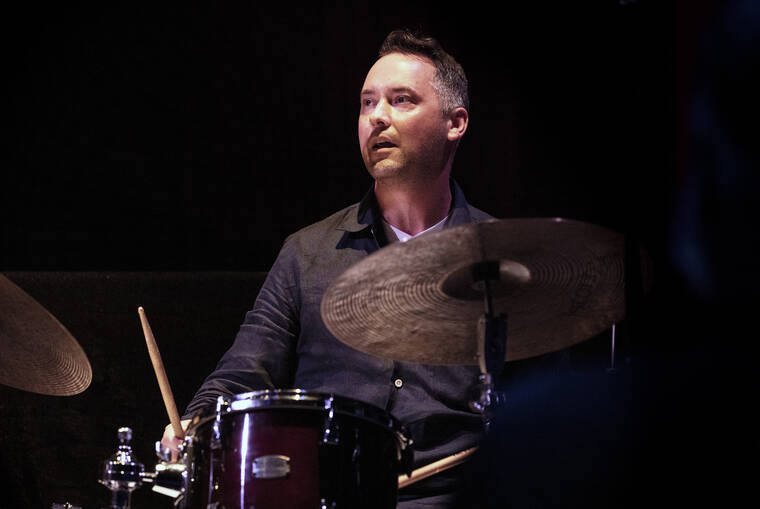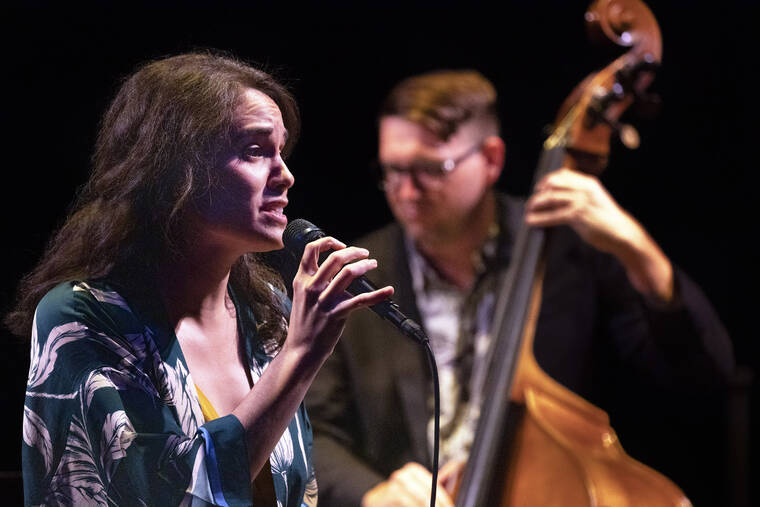Growing up on a reservation in Kamiah, Idaho, Julia Keefe’s journey into jazz began in her formative years. At four, she was captivated by Billie Holiday’s signature vocal style, especially the song “No More,” from her mother’s CD collection. Later, when Keefe started singing in the choir and high school events, her family encouraged her to broaden her musical horizons.
Although the world of jazz musicians is known for welcoming trailblazers, early in her career, Keefe pushed back against people’s preconceptions that Native American music is just drums, flutes, and chants. As a proud indigenous female jazz singer, she feels her purpose is to widen boundaries and continue to challenge those stereotypes.
“The conflict came up when I was giving workshops and lectures and when I led demonstrations, even at clubs,” Keefe recalled. “I think, for some, it was seeing indigenous people, and particularly Native Americans, as figures of the past in stories. And it wasn’t until recently with TV shows that there’s much more of a native presence in pop culture outside of a historical context.”
The Julia Keefe Quartet made its Kahilu Theatre debut last Saturday, and her band featured Adam Bravo (piano), John Urban (upright bass), Adam Benham (drums), and Keefe handled all the vocals. The venue converted its main stage into an intimate jazz club setting, complete with a décor of dim lighting, a bar, and candlelit tables to create a Speakeasy vibe, or as they call it, Club Kahilu.
While her 90-minute set was mostly filled with standards from the American Songbook, intriguing deviations such as two from Brazilian composer Antonio Carlos Jobim and “Not You Again” by guitarist John Scofield, stood out.
The show’s highlight was Keefe’s jazz interpretation of a traditional Nez Perce melody that loosely translates as “This is what we are called to do.” Keefe explained that her mother gave it to her while undergoing breast cancer treatment.
“It’s typically sung at the end of a person’s life or a memorial, but my mom is in one year’s remission now,” noted Keefe. “The song is matriarchal, indigenous, and very personal for me.” The melody was soothing, Pharaoh Sanders-like at times, and the first time she played it with this ensemble.
Visionary Keefe continues to expand the jazz spectrum with projects like the Julia Keefe Indigenous Big Band, a venture she started with jazz trumpeter Delbert Anderson. “We got funding from Jazz Road/South Arts and began the search for 16 Native musicians. The response was overwhelming, especially with kids as young as 15 telling me, ‘I thought I was the only Native jazz musician alive today.’ As a result, the project has evolved into a formation of a community of indigenous jazz musicians with a database of educational opportunities and a gathering place for other projects.”
Keefe’s Indigenous Big Band had its Olympia, Washington, premiere in May but is still working on a central location where its U.S. and Canada members can come together and jam. “Right now we’re communicating digitally, but I’m thinking of having a conference or piggybacking on one.”
Keefe also has plans to show the process of pulling together her Big Band and its performance with a documentary film. “This was the first time an all-indigenous big band was on the main stage that we know of. There were smaller ensembles in the 20s, 30s, and 40s that were all Native because as people came out of the Indian boarding schools, they had this knowledge of Western music and their instruments and were familiar with popular music of the time.”
“One of the beautiful things about jazz is the new voices that come into it, push the boundaries and try new things, and for me, reintroducing my culture into my music was a huge part of this new chapter of my artistry.”











